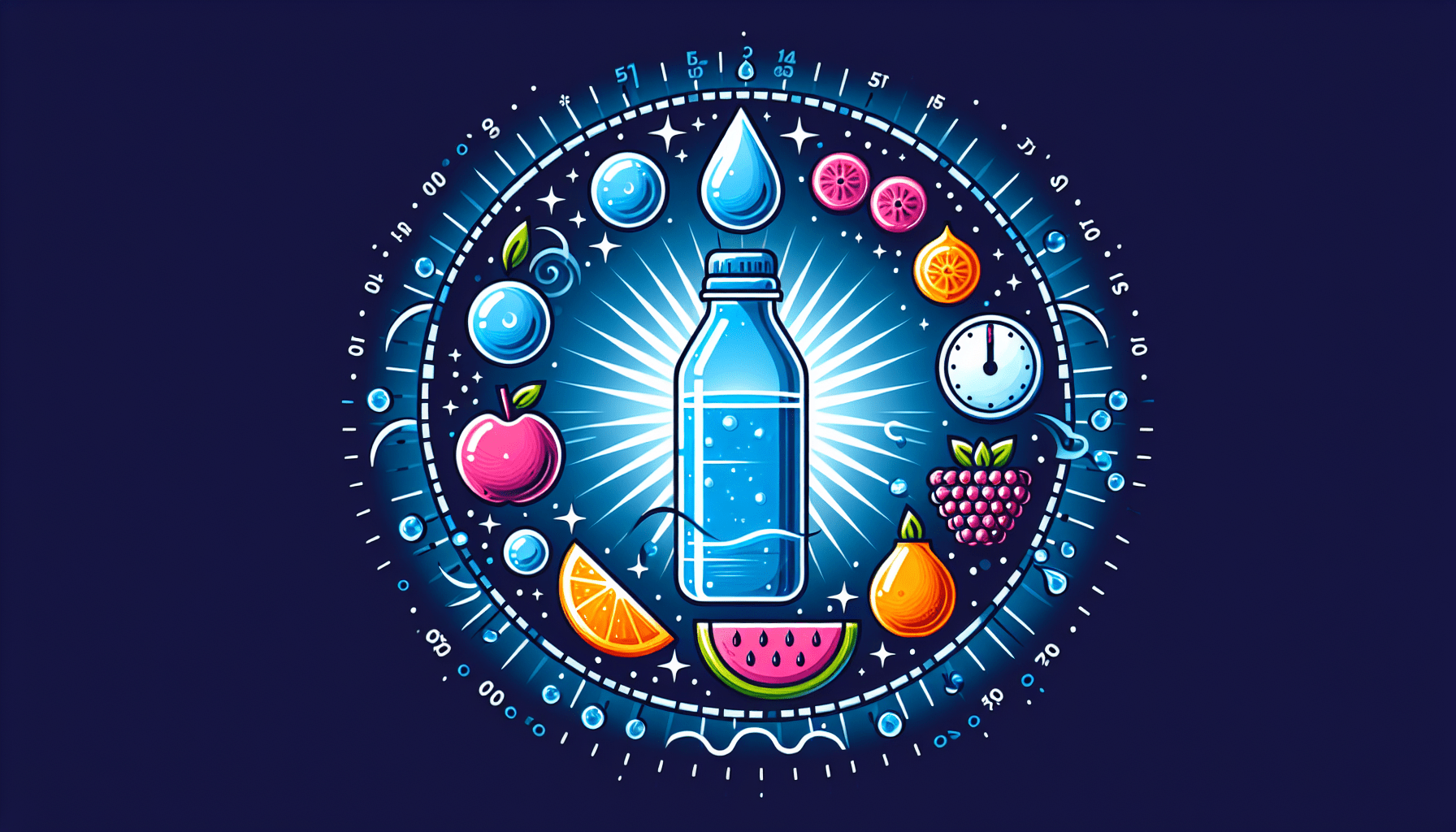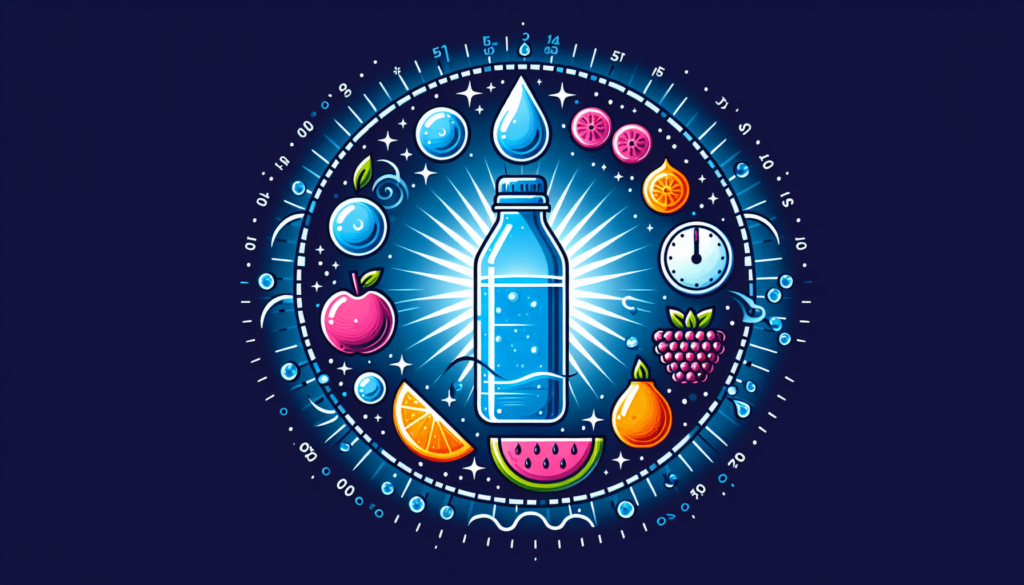So you’re interested in extended fasting methods? Well, you’ve come to the right place! In this article, we will be diving into the world of extended fasting and exploring its various types. From intermittent fasting to alternate day fasting, we’ll take a closer look at the different methods people use to prolong their fasting periods. Whether you’re a beginner or a seasoned faster, this article will provide you with a wealth of information and help you discover the fasting technique that suits you best. So sit back, relax, and let’s delve into the world of extended fasting!

Intermittent Fasting
Intermittent fasting is a popular method of fasting that involves alternating between periods of fasting and eating. There are several different approaches to intermittent fasting, including the 16/8 method, the 5:2 diet, and the eat-stop-eat method.
16/8 Method
The 16/8 method of intermittent fasting involves fasting for 16 hours and restricting your eating to an 8-hour window each day. This can be achieved by skipping breakfast and only consuming meals between, for example, 12 pm and 8 pm. During the fasting period, you can consume water, tea, and other non-caloric beverages.
Many people find the 16/8 method to be a practical and sustainable approach to intermittent fasting. It allows you to eat your meals during a specific time frame, which can make it easier to adhere to compared to other fasting methods.
5:2 Diet
The 5:2 diet, also known as alternate-day fasting, involves eating normally for five days of the week and then restricting calorie intake to 500-600 calories on the remaining two non-consecutive days. On fasting days, it’s important to choose nutrient-dense foods to ensure that your body gets the necessary vitamins and minerals.
The 5:2 diet offers flexibility in terms of choosing which days to fast, allowing you to fit fasting into your schedule. It’s important to note that although you are restricting calories on fasting days, you still need to maintain a balanced diet on non-fasting days to ensure proper nutrition.
Eat-Stop-Eat Method
The eat-stop-eat method involves fasting for 24 hours once or twice a week. This method allows you to choose which days to fast, as long as there is a 24-hour period of no calorie intake involved. During the fasting period, you can consume water, tea, and other non-caloric beverages.
The eat-stop-eat method may be more challenging for some individuals, as it involves longer periods of fasting. However, many people find it effective for weight loss and improving their relationship with food. It’s important to start slowly with this method and gradually increase your fasting duration to avoid any adverse effects.
Alternate-Day Fasting
Alternate-day fasting is a more intensive form of fasting wherein you alternate between periods of fasting and regular eating. This approach can provide a unique set of benefits for those looking to engage in extended fasting.
24-Hour Method
The 24-hour method of alternate-day fasting involves fasting for a full 24 hours, typically from dinner to dinner or lunch to lunch. For example, you would finish dinner at 7 pm and not eat again until 7 pm the following day. During the fasting period, you can consume water, tea, and other non-caloric beverages.
The 24-hour method can be challenging, especially for beginners, as it involves a full day of fasting. However, it can be an effective way to promote weight loss and reset your body’s metabolic processes. It’s important to stay hydrated and listen to your body’s hunger and fullness cues during this fasting method.
Extended Fasting
Extended fasting refers to fasting for more than 24 hours, typically ranging from 48 to 72 hours or even longer. This method involves abstaining from all calorie intake and relying solely on water, tea, and other non-caloric beverages for the duration of the fast.
Extended fasting should only be undertaken by individuals who are experienced with fasting and have consulted with a healthcare professional. It is essential to prioritize safety and listen to your body during extended fasting, as it can have significant effects on your overall health and well-being.
Extended Water Fasting
Extended water fasting is a form of fasting that involves consuming only water for an extended period, typically lasting several days or weeks. This fasting method has gained popularity for its potential health benefits and ability to promote weight loss.
Definition
Extended water fasting refers to abstaining from all food and calorie intake while consuming only water. During this fasting period, individuals may also consume herbal teas or other non-caloric beverages to help curb hunger and support overall well-being.
Benefits
Extended water fasting has been associated with various health benefits. Firstly, it can promote significant weight loss as the body turns to stored fat for energy when there is no incoming food. It can also help improve insulin sensitivity, lower blood pressure, and decrease inflammation in the body. Additionally, water fasting may support cellular repair and autophagy, leading to improved overall health and longevity.
Risks and Considerations
Extended water fasting is a strict and potentially challenging fasting method. It is crucial to approach this type of fasting with caution and, ideally, under the guidance of a healthcare professional. Prolonged fasting can result in nutrient deficiencies, dehydration, and electrolyte imbalances if not conducted properly. It may not be suitable for individuals with certain medical conditions or pregnant or nursing women.
Tips for a Successful Water Fast
- Start with shorter fasting periods before attempting an extended water fast to allow your body to adapt gradually.
- Stay hydrated by drinking plenty of water throughout the day. Aim for at least eight glasses of water per day.
- Listen to your body and rest when needed. Extended water fasting can be physically and mentally demanding, so it’s important to give yourself ample time for relaxation and self-care.
- Break your fast slowly and with caution. Start with easily digestible foods and gradually reintroduce regular meals to avoid overwhelming your digestive system.
Extended Juice Fasting
Extended juice fasting is another fasting method that involves consuming only fresh juices derived from fruits and vegetables for an extended period. This approach allows for some caloric intake while still providing potential health benefits associated with fasting.
Definition
Extended juice fasting involves reducing or eliminating solid food intake and replacing it with freshly squeezed juices. These juices are typically made from a variety of fruits and vegetables, providing essential vitamins and minerals while still allowing the body to enter a fasting state.
Benefits
Extended juice fasting offers several benefits. It provides the body with essential nutrients, vitamins, and minerals while allowing the digestive system to rest and detoxify. Juice fasting can boost the immune system, promote weight loss, and improve overall energy levels. Additionally, the abundance of phytonutrients in fresh juices can support cellular repair and rejuvenation.
Risks and Considerations
Extended juice fasting can be nutritionally insufficient if not properly planned and executed. While juices may provide vital nutrients, they lack in essential macronutrients like protein and fat. This fasting method may also cause a rapid drop in blood sugar and energy levels, leading to feelings of fatigue and weakness. It is crucial to choose a wide variety of fruits and vegetables to ensure a balance of nutrients and monitor your body’s response during the fast.
Tips for a Successful Juice Fast
- Use a variety of fresh fruits and vegetables to create diverse and nutrient-rich juices.
- Consider supplementing with plant-based protein powders or healthy fats to ensure an adequate intake of essential macronutrients.
- Limit or avoid juices high in sugar content to prevent blood sugar imbalances.
- Start and end the fast with lighter meals to help ease the transition into and out of the juice fast.
- Listen to your body and be mindful of any signs of nutrient deficiencies or adverse effects. If necessary, consult with a healthcare professional for guidance.
Dry Fasting
Dry fasting is an extreme form of fasting that involves abstaining from both food and water for a certain period. This fasting method should only be used under strict supervision and is not recommended for beginners or individuals with certain medical conditions.
Definition
Dry fasting entails refraining from all food and fluid intake, including water. This means that no liquids are consumed, making it the most severe and challenging form of fasting. Dry fasting can last anywhere from several hours to a few days.
Benefits
Advocates of dry fasting claim that it can provide numerous benefits for the body. Some of the reported benefits include enhanced detoxification, rapid weight loss, increased autophagy, and improved energy levels. However, it’s important to note that there is limited scientific research to support these claims, and dry fasting can be risky if not approached with caution.
Risks and Considerations
Dry fasting poses significant risks to overall health and well-being. Without proper hydration, the body can quickly become dehydrated, leading to electrolyte imbalances and other complications. The risk of severe dehydration is particularly high during dry fasting, and it can have serious consequences on the body’s organs and systems. Due to these risks, dry fasting should only be undertaken by experienced individuals who have consulted with a healthcare professional.
Tips for a Successful Dry Fast
- Dry fasting should only be attempted by those who are knowledgeable about fasting and have consulted with a healthcare professional.
- Prioritize rehydration and replenishment of electrolytes before and after the dry fast to mitigate potential risks.
- Start with shorter dry fasting durations and gradually increase them if desired.
- Be aware of your body’s signals and discontinue the fast if you experience severe discomfort or adverse effects.
- Do not engage in intense physical activity during a dry fast, as it can exacerbate the risk of dehydration and electrolyte imbalances.
Time-Restricted Eating
Time-restricted eating is a form of fasting that involves limiting your daily eating window to a certain number of hours. This approach is less restrictive than some of the other fasting methods and can easily be incorporated into daily life.
Definition
Time-restricted eating involves restricting your eating to a specific period each day, typically ranging from 8 to 12 hours. For example, if you choose an 8-hour eating window, you would consume all your meals and snacks within that time frame and fast for the remaining 16 hours of the day.
Benefits
Time-restricted eating can provide several benefits, including weight management and improved metabolic health. By limiting your eating window, you naturally consume fewer calories and may experience reduced appetite. This approach can also help regulate circadian rhythm and optimize digestion by allowing your body’s natural fasting and feeding cycles to align.
Tips for Successful Time-Restricted Eating
- Choose an eating window that works best for your schedule and lifestyle.
- Be mindful of your food choices and aim to consume a balanced diet within the designated eating window.
- Plan your meals and snacks ahead of time to ensure you are getting proper nutrition and avoid impulsive eating during the fasting period.
- Stay hydrated throughout the day, even during the fasting period, to support optimal bodily functions.
- Gradually increase the duration of the fasting window if desired, but listen to your body’s signals and adjust accordingly.
One Meal a Day (OMAD)
The one meal a day (OMAD) approach to fasting involves eating all your daily food intake within a single, condensed time frame. This method can be challenging, but it offers unique benefits for those looking to structure their eating habits and potentially promote weight loss.
Definition
With the one meal a day (OMAD) approach, individuals consume their entire daily caloric intake within one meal, usually during a 1-2 hour window. The fasting period for OMAD can last 22 to 23 hours, allowing the body to enter a fasted state for an extended period.
Benefits
OMAD can help control calorie intake, as you are limited to a single meal. This restriction often leads to an overall reduction in daily caloric intake, which can be beneficial for weight loss. OMAD also provides an opportunity for the digestive system to rest and reset, potentially leading to improved digestion and nutrient absorption.
Considerations for OMAD
OMAD may not be suitable for everyone, especially individuals with specific dietary needs or medical conditions. It’s important to consider nutritional adequacy and ensure that your single meal contains all the necessary macro and micronutrients. Additionally, OMAD can be mentally challenging, as it requires discipline and careful planning to consume all your daily nutritional needs within a condensed time frame.
Extended Fasting for Weight Loss
Extended fasting can be an effective method for weight loss due to its impact on the body’s metabolic processes and the restriction of calorie intake.
How Extended Fasting Affects Weight Loss
During an extended fast, the body depletes its glycogen stores, which are the stored carbohydrates used for energy. Once glycogen is used up, the body starts utilizing stored fat for fuel, leading to weight loss. Extended fasting also promotes a calorie deficit, as you are consuming little to no calories during the fasting period.
However, it’s important to note that weight loss resulting from extended fasting can involve both fat loss and muscle loss. It’s crucial to combine fasting with proper nutrition and strength training to preserve muscle mass and support long-term weight loss goals.
Considerations for Using Extended Fasting as a Weight Loss Method
Extended fasting may not be suitable for everyone as a weight loss method. Individuals with certain medical conditions, pregnant or nursing women, and individuals with a history of disordered eating should exercise caution and consult with a healthcare professional before attempting extended fasting for weight loss.
It’s essential to approach weight loss with a holistic mindset and focus on sustainable lifestyle changes rather than relying solely on extended fasting. Balancing nutrition, physical activity, and mindful eating habits is key to long-term success and overall well-being.
Extended Fasting for Health Benefits
Extended fasting can provide numerous health benefits beyond weight loss. These benefits include improved insulin sensitivity, cellular repair and autophagy, improved brain function, heart health, and anti-aging benefits.
Improved Insulin Sensitivity
Extended fasting can improve insulin sensitivity, which is crucial for preventing and managing conditions like type 2 diabetes. Fasting allows the body to regulate blood sugar levels and reduce insulin resistance, leading to improved glucose utilization and better overall metabolic health.
Cellular Repair and Autophagy
During extended fasting, the body undergoes a process called autophagy, which involves the degradation and recycling of damaged cells. This cellular repair mechanism can support overall cellular health, boost the immune system, and protect against the development of chronic diseases.
Improved Brain Function
Research suggests that extended fasting may have neuroprotective effects and enhance brain function. Fasting promotes the production of brain-derived neurotrophic factor (BDNF), a protein that supports the growth and maintenance of brain cells. Increased BDNF levels have been associated with improved cognitive function and a reduced risk of neurodegenerative diseases.
Heart Health
Extended fasting may have beneficial effects on heart health. Fasting can help lower blood pressure and cholesterol levels, reduce inflammation in the body, and promote healthier lipid profiles. These effects can contribute to a decreased risk of cardiovascular diseases such as heart attacks and strokes.
Anti-Aging Benefits
Some studies suggest that extended fasting may have anti-aging benefits. Fasting triggers a cellular response that enhances DNA repair and reduces oxidative stress in the body. These mechanisms can potentially slow down the aging process and promote longevity.
Precautions and Considerations
While extended fasting can offer various benefits, it is essential to approach it with caution and consider certain precautions to ensure your safety and well-being.
Consultation with a Healthcare Professional
Before embarking on any form of extended fasting, it is crucial to consult with a healthcare professional, especially if you have underlying medical conditions or are taking medications. A healthcare professional can provide personalized guidance, monitor your progress, and address any potential risks or concerns.
Monitoring and Replenishing Nutrients
During extended fasts, it’s important to monitor your nutritional intake and ensure adequate nutrient replenishment during the eating periods. Consider incorporating whole, nutrient-dense foods and, if necessary, consult with a registered dietitian to ensure you are meeting your nutritional needs.
Listen to your Body
Pay attention to your body’s signals and be mindful of any adverse effects or discomfort during fasting. It’s essential to strike a balance between pushing your limits and practicing self-care. If you experience severe symptoms or concerns, discontinue the fast and consult with a healthcare professional.
Disordered Eating Patterns
Extended fasting may not be suitable for individuals with a history of disordered eating patterns. Fasting can potentially trigger or exacerbate unhealthy relationships with food, so it’s important to approach fasting with a healthy mindset and be mindful of any emotional or psychological challenges that may arise.
Potential Risks
Extended fasting, especially of longer durations, can pose risks to certain individuals. Prolonged fasting can lead to nutrient deficiencies if not properly planned and supervised. Dehydration, electrolyte imbalances, and muscle loss may also occur during extended fasts. Individuals with certain medical conditions, pregnant or nursing women, and those with a history of disordered eating should exercise caution and consult with a healthcare professional before attempting extended fasting.
In conclusion, exploring the different types of extended fasting methods can provide valuable insights into various approaches to fasting and their potential benefits and considerations. Whether you choose intermittent fasting, extended water fasting, juice fasting, or other methods, it’s essential to prioritize your overall health, consult with a healthcare professional when necessary, and listen to your body’s needs. Extended fasting can offer unique advantages, but only when approached with caution, proper planning, and the understanding of individual limits and preferences.








